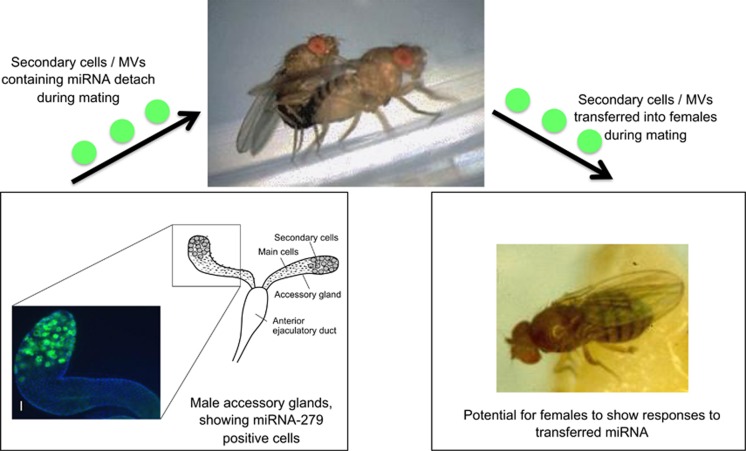Figure 4.
A hypothetical model for miRNA transfer between the sexes. Here, miR-279, which is implicated in microguarding against the costs of gene expression variation in females arising from sexual conflict (Fricke et al., 2014), has the potential to be transferred to females from males during mating. miR-279 is expressed in the secondary cells of the D. melanogaster male accessory gland (Green et al., unpublished data). The inset shows a confocal micrograph of the tip of an accessory gland of a 1 day-old male reproductive system, in a transgenic line in which the expression of miR-279 is tagged to a GFP reporter (miR-279-GAL4; UAS-GFP; Cayirlioglu et al., 2008). The bi-nucleate arrangement of the nuclei in the accessory gland main cells is evident by DAPI staining (blue). Scale bar, 50 μM. These secondary cells can detach and transfer across to females during mating (Leiblich et al., 2012). The secondary cells also release microvesicles (MVs) that are similarly transferred during mating and that can interact with female tissues and alter female post mating receptivity (Corrigan et al., 2014). This system therefore offers a potential model for miRNA trafficking between the sexes, in a process likely to be shaped by sexual conflict.

